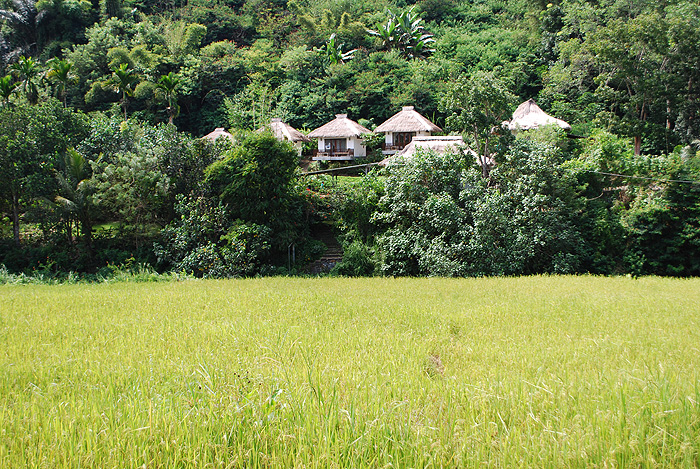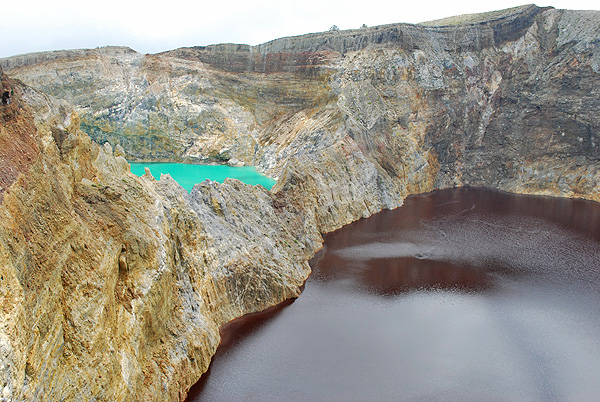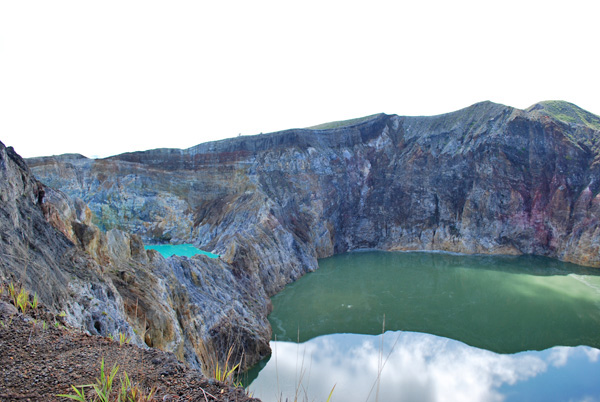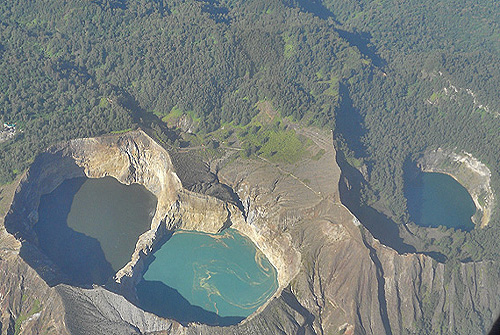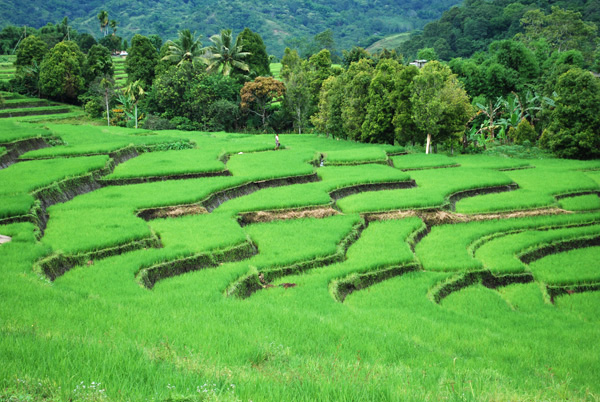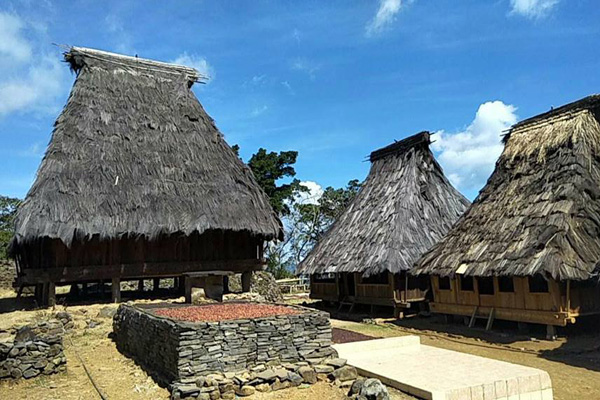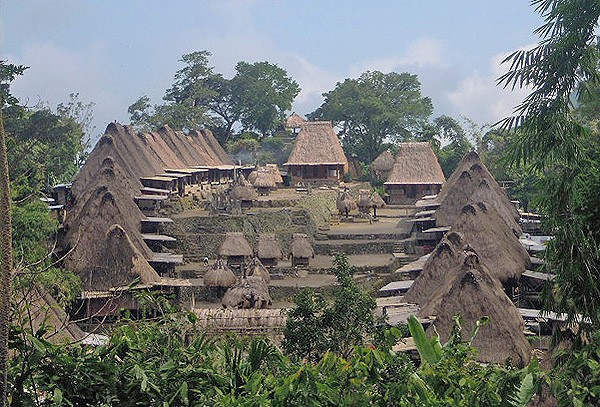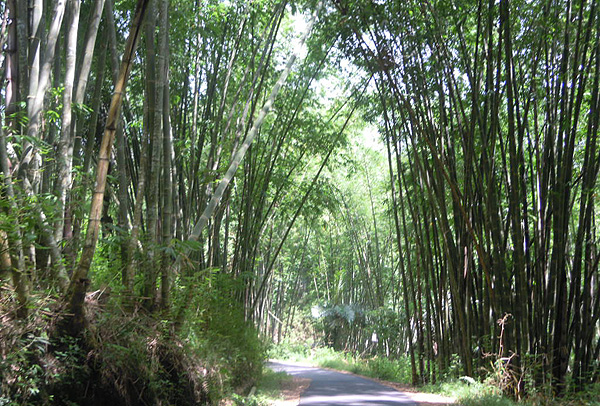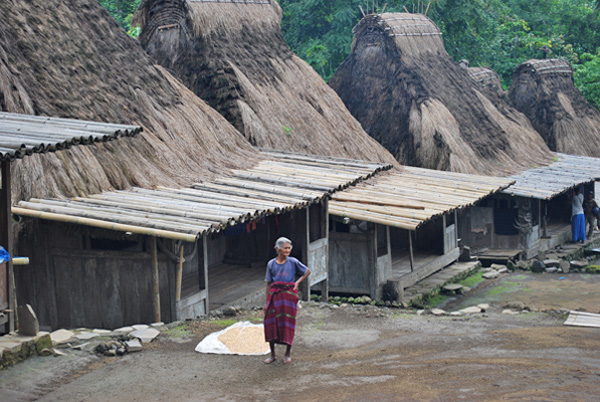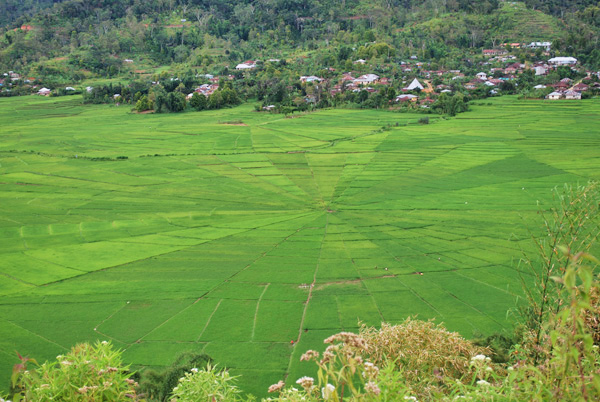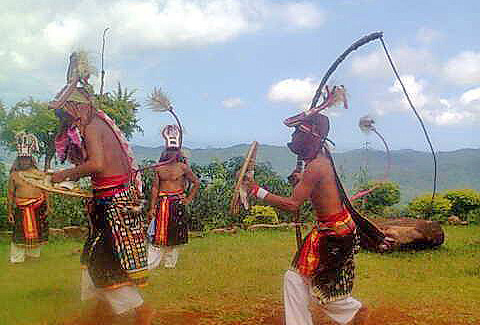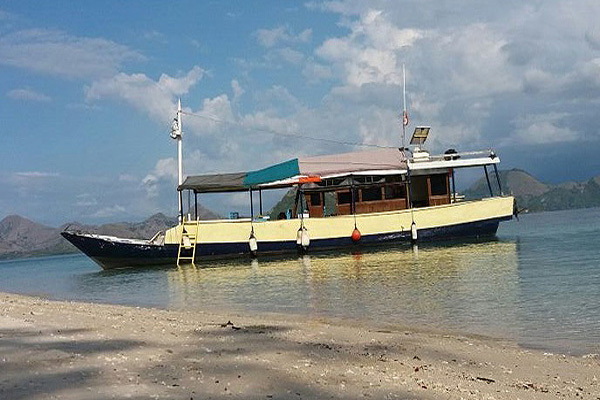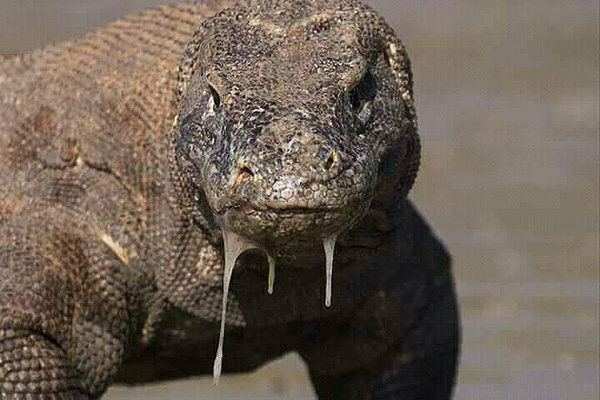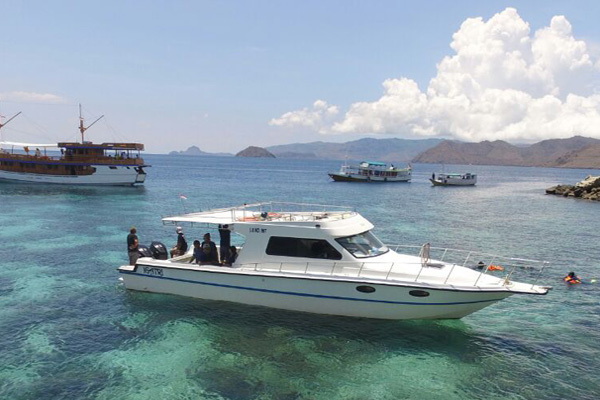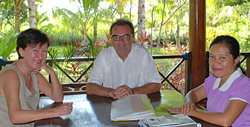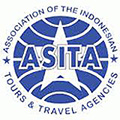Flores Country Tour & Komodo National Park - 6 days trip from/to Bali
The Small Sunda Island Flores in Indonesia is a green island pearl that has not yet been discovered by tourists. It is a paradise for lovers of beautiful natural landscapes. Volcanoes and colour-changing crater lakes, spider web paddy fields, ancient villages, jungles and beaches - these are the scenic and cultural highlights of Flores that you will discover on a 4-day land tour.
The Komodo dragons, the prehistoric-looking largest lizards in the world, live in the wild on the islands of the Komodo National Park to the west of Flores. On a boat day trip you will discover the islands of the UNESCO-protected Komodo National Park and will almost certainly see the Komodo dragons.
ITINERARY:
Bali ✈ Ende or Maumere airport ➝ Kelimutu ➝ Bajawa ➝ Ruteng ➝ Labuan Bajo ➝ Boat trip in Komodo National Park ➝ Labuan Bajo ✈
✈ Arrival to Flores ➝ Drive to Moni at the foot of Kelimutu volcano
From Bali you fly to Flores island and land at the airport in the small port town Ende. From here you drive in about 2 hours to the village Moni, at the foot of the Kelimutu volcano.
You stay overnight in Kelimutu Eco Lodge, which is quiet and secluded, nestled in the jungle and idyllically situated with a view of rice fields.
Day 2:
The 3-colored Lakes of the Volcano Kelimutu ➝ Bajawa
Kelimutu is a volcano near the Moni village in Central Flores in Indonesia. The Volcano Kelimutu consists of three crater Lakes, which have different colors because of minerals. The colors of the Lakes have changed several times dramatically over the last years. The Lunar of crater is a hideout of the spirits according to the beliefs of the locals. Then the souls of boys and girls live in the Tiwu Nuwa Muri Koo Fai , which change the color between turquoise, blue and white greenish In Tiwu Ata Polo the sinner wait till night, to fly up with the wind and destroy every living Intruder. This lake change the colors between red, dark green, dark red and green color. The souls of the ancients rest in the Tiwu Ata Bupu. The now almost black Lake was once dark blue then light blue to white. The name of Kelimutu itself in the local language means 'keli' = 'mountain' and 'mutu' = 'boiling'.
On this day, we have to get up early in the morning and after a cup of coffee or tea, we drive to the volcano Kelimutu. After 30 minutes we reach the parking lot, and here a pleasant walk about 1.5 km and 127 stairs leads to the terrace of Mount Kelimutu at 1690 m altitude. From here, you have wonderful views of all three colored crater Lakes of Kelimutu and the surrounding countryside. Approximately at 10am fog or clouds can come up and prevent the view so it is important to be up at least between 8 and 9. In the midst of this lunar landscape, the colors of the Lakes look spectacular.
It's always a surprise what colors the Kelimutu Lakes will have when we visit.
On the drive back from mount Kelimutu to Moni we are pasing beautiful rice fields and tropical Florests. Arrived in Moni, your can have breakfast at the hotel before we drive to Ende with stops at the street market in Nduaria , rice paddies in Detusoko and visit the well-preserved traditional houses in Wologai village with the for Ende region formerly typical Lioneser architecture.
Than we continue to Bajawa and stop at Penggajawa Beach, which is littered with many colored stones. The stones are predominantly blue to turquoise, but also green and red stones are in between. The stones are collected by the local population and sold as building material. On the way, we take a short walks and make stops to enjoy the scenic beauty of the landscape.
In the late afternoon we arrive in Bajawa, the largest city in the Ngada district. At the end of a long eventful day you will spend the night in Bajawa at the foot of the Ineri volcano..
Day 3:
Bajawa ➝ traditional village Bena ➝ Ruteng
After an early breakfast we take an excursion to Bena, one of the best preserved traditional villages in Ngada district. The village consists of two rows of centuries-old grass-covered houses. In the center of the village there are sacrificial stones and cult houses that were formerly used for ritual ceremonies and offerings. The population that lives and works in this listed village today are Christians and yet some of the old traditions and ancestor worship are still alive today.
After visiting Bena and the smaller traditional village of Luba, we continue to Ruteng, taking short walks along the way. We take a break in Aimere, where we visit an original Arak distillery. This day we spend a lot of time driving through a mountainous landscape and later through terraced rice fields in Mano and with beautiful views of the Rana Mese crater lake. In the afternoon we reach Ruteng and visit Ruteng Pu'u. In Ruteng you will spend the night in a beautiful, small country hotel surrounded by a well-tended gardens.
Day 4:
Ruteng ➝ Labuan Bajo
After breakfast, we drive from Ruteng to Labuan Bajo. Our first stop is in Cancar to see the "spider web rice field" called Lingko. Lingko is a typical farmer land in the group or clan belong to Manggaraian (west part ethnic group) when they divide land. Than we continue to Todo (2 hours drive) in South Central Manggarai. It is one of the few possibilities to see the traditional ceremonial houses Mbaru Niang. In the past, Todo was also the Centre of the Kingdom of Manggaraian and the home of the Royal clan.
Alternative to Todo you can visit Liang Bua (Hobbit cave) . This large cave was the site of a stunning archeological discovery in 2003, when the skeletal remains of a small humanoid were unearthed, the so-called Homo Floresiensis. There is a small museum on site with some displays. Otherwise the cave is indeed empty and the road in poor condition but the scenery is beautiful.
If you spend 2 nights in Ruteng you can visit both sites and make hiking from Hobbit Cave to Tengkulese Watterfall. Optional and with additional charge we can visit Melo to see performance of Caci - ritual whip fight dance .
Accommodation in Labuan BajoDay 5:
Labuan Bajo ➝ Day excursion to Rinca Island ➝ Labuan Bajo
Rinca island has a higher density of the Komodo population and is very likely to see Komodo. After arrival at Rinca we start a 3 hour walk through a landscape dotted with Lonta Palm trees . We will see not only the Komodo but we will see also other animals, such as Timor deer, Buffalo, monkeys, wild boars, and exotic birds. There are breathtaking views of the slopes. Lunch will be served upon return to the boat.
In the afternoon there is possibility for snorkeling, swimming or just relaxing on the white beach of Kelor island or Bidadari island. Late afternoon we are sailing back to Labuan Bajo. Accommodation in Labuan Bajo
The boat trip can also be done with a private speedboat with an appropriate surcharge. If you really want to immerse yourself in the fascinating underwater world of Komodo National Park, we recommend multi-day sailing trips on traditional Phinisi boats.
Day 6:
✈ Departure from Flores Island
The tour ends with the transfer to the airport in Labuan Bajo. If you have an afternoon flight, than we can offer optional half day excursion around Labuan Bajo with visit of Batu Cermin Cave.
The tour can also start in Labuan Bajo and end in Ende or start in Labuan Bajo and end in Maumere.


